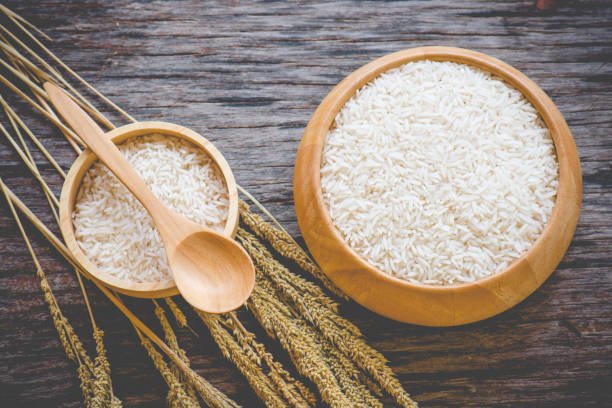Your Ultimate Guide to Basmati Rice Gluten-Free Status

Finding appropriate products might be difficult whether you follow a gluten-free diet or are considering one. Although rice is a mainstay in gluten-free kitchens, is Basmati rice a safe choice? This tutorial will cover everything you need to know about Basmati rice and how well it fits a gluten-free diet. Whether you depend on Indian grocery delivery or visit neighborhood stores, we will also provide some advice on selecting the correct rice and cooking great gluten-free cuisine.
What Is Gluten and Why Avoid It?
Firstly rather than making sense of the what Basmati rice is about, it would do good to first understand what gluten means. Gluten is a compound found in foods like flour, oats, barley, and rye. Where else these items are benign, for people with celiac disease or gluten intolarence, even small doses of gluten are harmful and can lead to a host of health issues which range from digestive disorders, weakness and malabsorption of nutrition. In order to prevent such cause, it is quite important to avoid gluten containing foods and ingredients.
Is Basmati Rice Gluten Free?
The quick response is yes, – Basmati rice is gluten-free by nature. Rice, in general, belongs to the family of grasses and serves as a seed, therefore unlike wheat, it is gluten-protein free. Neither brown nor white basmati rice is offending when taken on a gluten-free diet.
Basmati rice is widely cultivated long-grain rice found on the Indian and Pakistani subcontinent, bearing a special fragrant scent and a healthy nutty flavor. Brown and white basmati rice is gluten-free but brown basmati rice has its bran layer intact which makes it fibrous and healthy as compared to the white version.
Why Is Basmati Rice a Good Choice for Gluten-Free Diets?
Basmati rice is unique among other options for anybody on a gluten-free diet for various reasons.
1. Aromatic and flavorful
Basmati rice has a taste and aroma that transcends that of ordinary rice, which makes it an ideal accompaniment to any dish. The Basmati nutty flavor is so enjoyable that it finds its way into many dishes from curries to grilled dishes.
2. Gluten-Free by Nature
Being basmati rice gluten free, it is ideal for people suffering from which Celiac disease or any centric dietary form of gluten intorance. It is also complimented well with other gluten free elements such as vegetables, meat or legumes cumin clay pots gan pottery acceossories.
3. Low Glycemic Index
Basmati rice, especially the brown variety, has a lower glycemic index than most varieties of rice. Thus, it helps maintain constant energy levels, as glucose is released slowly into the bloodstream.
4. To The Brim With Important Nutrients
Basmati rice contains several important nutrients such as B vitamins, magnesium, and fiber – in the case of the brown type. These are very important for providing energy, aiding in digestion and promoting overall wellness.
5. Versatile and Easy to Prepare
Basmati rice is versatile and can be used in various dishes ranging from Indian curries to rice salads and bowls. It is ideal for side dishes or as the key ingredient in a meal owing to its light and fluffy texture.
How to buy gluten free basmati rice
Basmati rice is basically gluten free; however, due to processing or packing it may get contaminated. Follow these rules to make sure that any rice buy is completely safe for celiacs:
1. Look for Certified Gluten Free Product
Some gluten free companies list their products particularly gluten free. Look for basmati fit for celiacs and it usually should have a label glutinous free content certified to 20 parts per million (ppm) gluten.
2. Purchase From Reputable Sources
It does not matter whether loosing short grain rice in a local store or ordering Indian rice delivery, stick only to the reliable brands. In such sources of supply there are strict measures to prevent treatment of cereals which gluten grains have.
3. Check the label on the package
Look for labels that indicate the rice has been processed in a gluten-free environment. This ensures that there is no risk of contamination from any wheat, barley or rye.
Gluten-Free Basmati Rice Cooking
Once you have Basmati rice free of gluten, you should cook it carefully to accentuate its texture and taste. Here's how to create ideal Basmati rice:
1. Wash Completely
Before cooking basmati rice should be well cleaned. This eliminates extra starch, therefore keeping the rice airy and free from sticky properties. Under cold water, rinse the rice until the water runs clear.
2. Ratios of Water
Use the correct water to---rice ratio for fully cooked Basmati rice. Usually, a 1:1.5 rice to water ratio does well. You could add a bit additional water for softer rice.
3. Let it rest after cooking
Let the rice rest covered for around five to ten minutes after cooking. This stage guarantees the intended fluffy texture and lets the steam continue cooking the grains uniformly.
Conclusion
Basmati rice is a naturally gluten-free option that offers a rich, aromatic flavor and versatility in cooking. For individuals on a gluten-free diet, this is the ideal food to enjoy a range of recipes. When buying rice, especially from Best Indian Rice Brands in the USA, make sure it is certified gluten-free to avoid any risk of cross-contamination.
Including Basmati rice in your gluten-free diet will let you savor tasty, healthy dishes that are simple and safe to cook. Basmati rice is a great mainstay for a gluten-free diet whether you buy your rice from neighborhood shops or use handy Indian grocery delivery services.